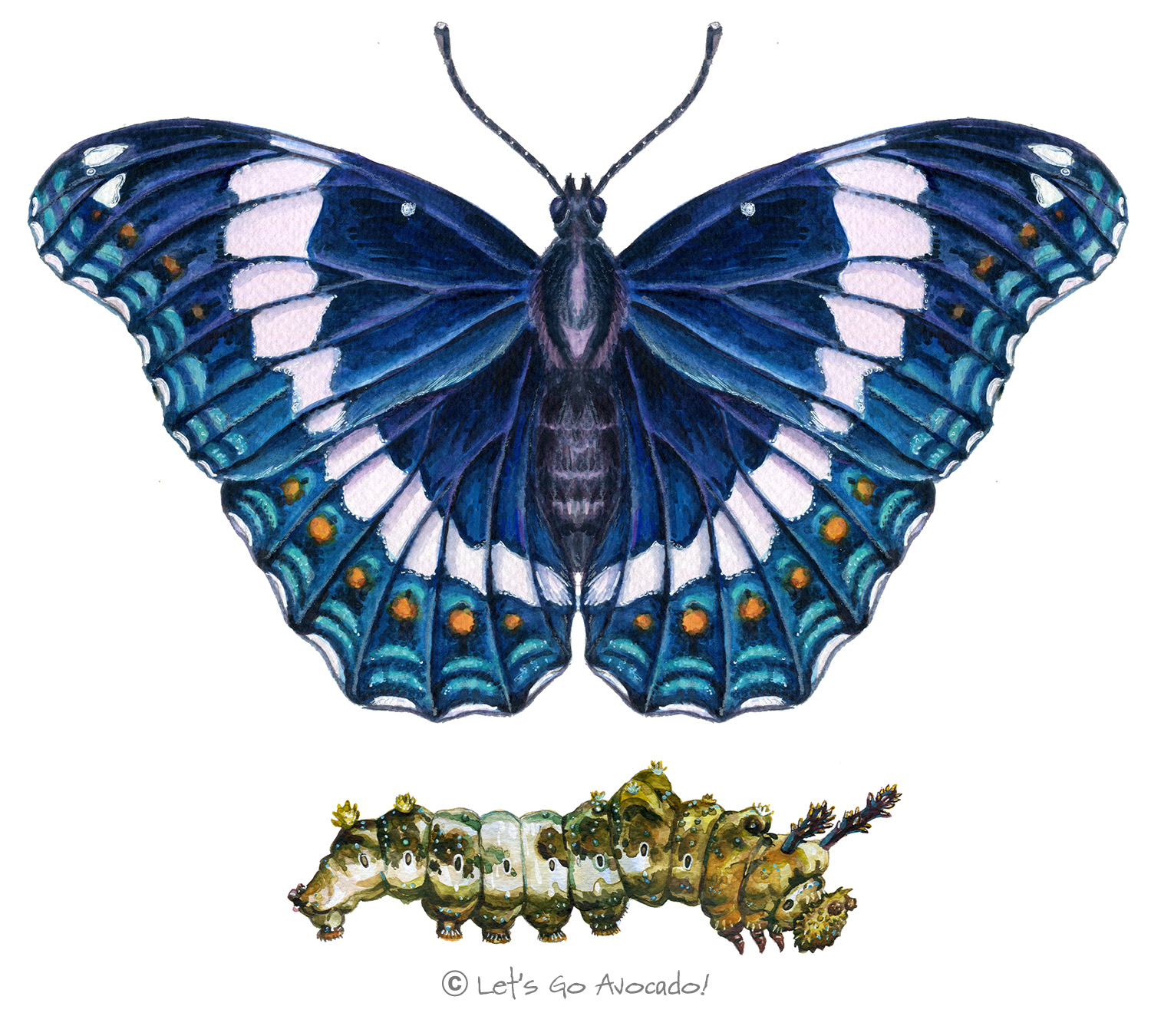

White Admiral Butterfly
Red-spotted Purple. Red-spotted Admiral
Limenitis arthemis
This page may contain affiliate links.
Read our disclosure and privacy policy here.
The White Admiral Butterfly (Limenitis arthemis) is a striking and elegant butterfly species known for its distinctive wing patterns and graceful flight. It belongs to the brush-footed butterfly family (Nymphalidae) and is found in various parts of North America.
White Admiral Butterfly
Common Name
White Admiral Butterfly
Other Names
Red-spotted Purple. Red-spotted Admiral
Latin Name
Limenitis arthemis
Distribution
The White Admiral Butterfly is primarily found in North America. Its range extends from eastern North America, including parts of the United States and Canada, down to the southern United States, and as far west as the Great Plains. It can also be found in certain parts of Mexico.
Appearance
The White Admiral Butterfly is known for its distinctive features, including its deep black wings with white bands and striking iridescent blue markings near the edges of the wings. It also has a row of conspicuous red spots on its hindwings. These striking patterns make it easily recognizable.
Size
The wingspan of the White Admiral Butterfly typically ranges from 2.5 to 3.5 inches (6.3 to 8.9 cm). The caterpillar of this species can grow to be about 1.5 inches (3.8 cm) in length.
Habitat
White Admiral Butterflies are commonly found in deciduous woodlands, forest edges, and along streams and rivers. They prefer shaded and moist environments with access to suitable host plants.
Diet
The caterpillars of White Admiral Butterflies primarily feed on the leaves of various tree species, including cherry, poplar, willow, and birch. As adults, White Admiral Butterflies feed on flower nectar. They are known to visit a variety of wildflowers, including species like milkweed, thistle, and butterfly bush.
Lifecycle
The White Admiral Butterfly undergoes complete metamorphosis, consisting of four stages: egg, larva (caterpillar), pupa (chrysalis), and adult butterfly. After hatching from eggs laid on host plants, the caterpillars go through several instars, molting and growing. Once fully developed, they pupate in a chrysalis before emerging as adult butterflies.
Defense Mechanisms
Caterpillars of the White Admiral Butterfly have a few defense mechanisms, including their cryptic coloration that helps them blend into the surroundings. Adult White Admiral Butterflies rely on their wing patterns for defense. The conspicuous red spots and blue iridescence can startle or confuse predators, making them less likely to be attacked. Additionally, they have a rapid and agile flight pattern, which helps them evade potential threats.
Ecological Importance
White Admiral Butterflies play a role in pollination as they visit flowers for nectar. Additionally, they are part of the ecosystemAn ecosystem is a community of living organisms, like insects and birds, and non-living components, like water and rocks, that interact with each other in a specific area. Learn More, serving as both prey for certain predators and as pollinators for various plant species.
ConservationThe act of protecting and preserving natural resources and the environment. Conservation efforts are important to protect beavers and their habitats. Learn More Status
The White Admiral Butterfly is not globally assessed for conservation status, but its populations can be affected by habitat loss and environmental changes. Conservation efforts often focus on preserving its woodland habitats.

There’s a lot to explore right where we are, in our own neighborhoods and backyards! Join us while we get off the couch and explore the everyday wonders of nature, science, space, engineering, art, and anything else we stumble upon during on our adventures.







